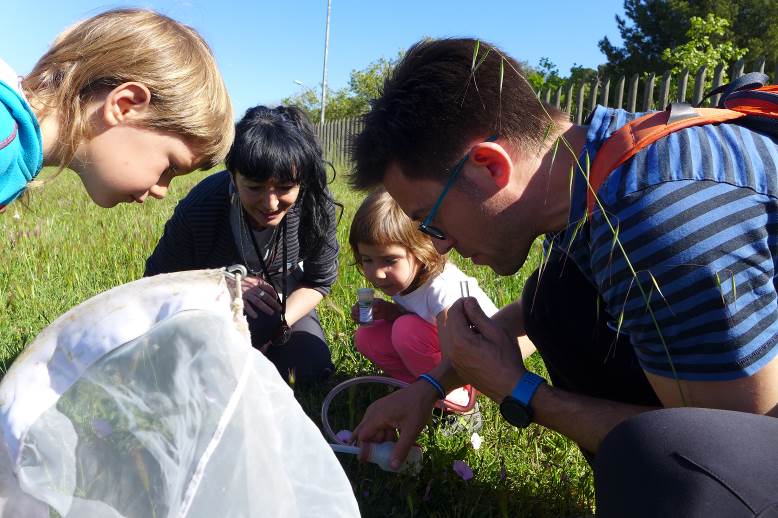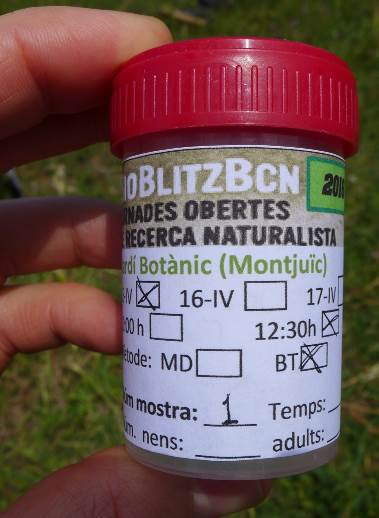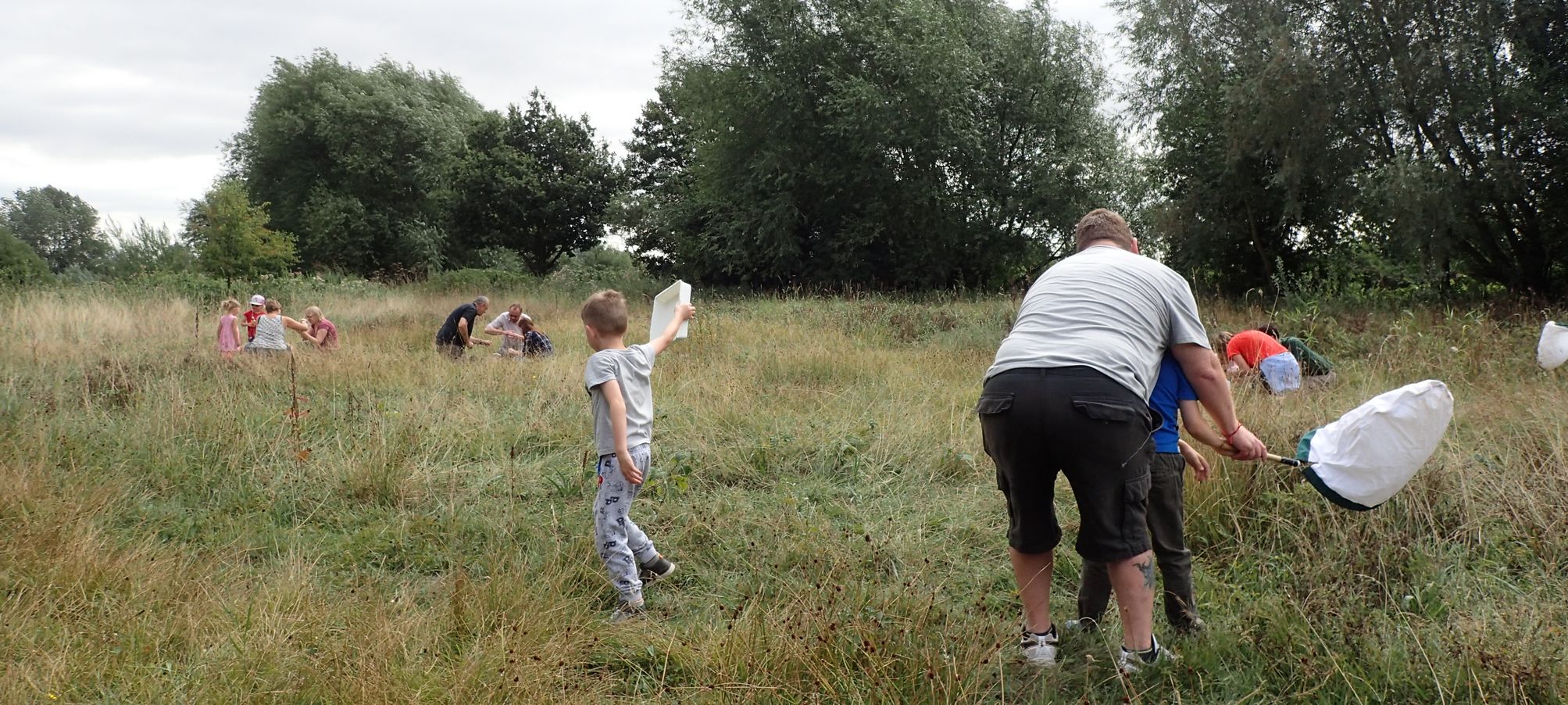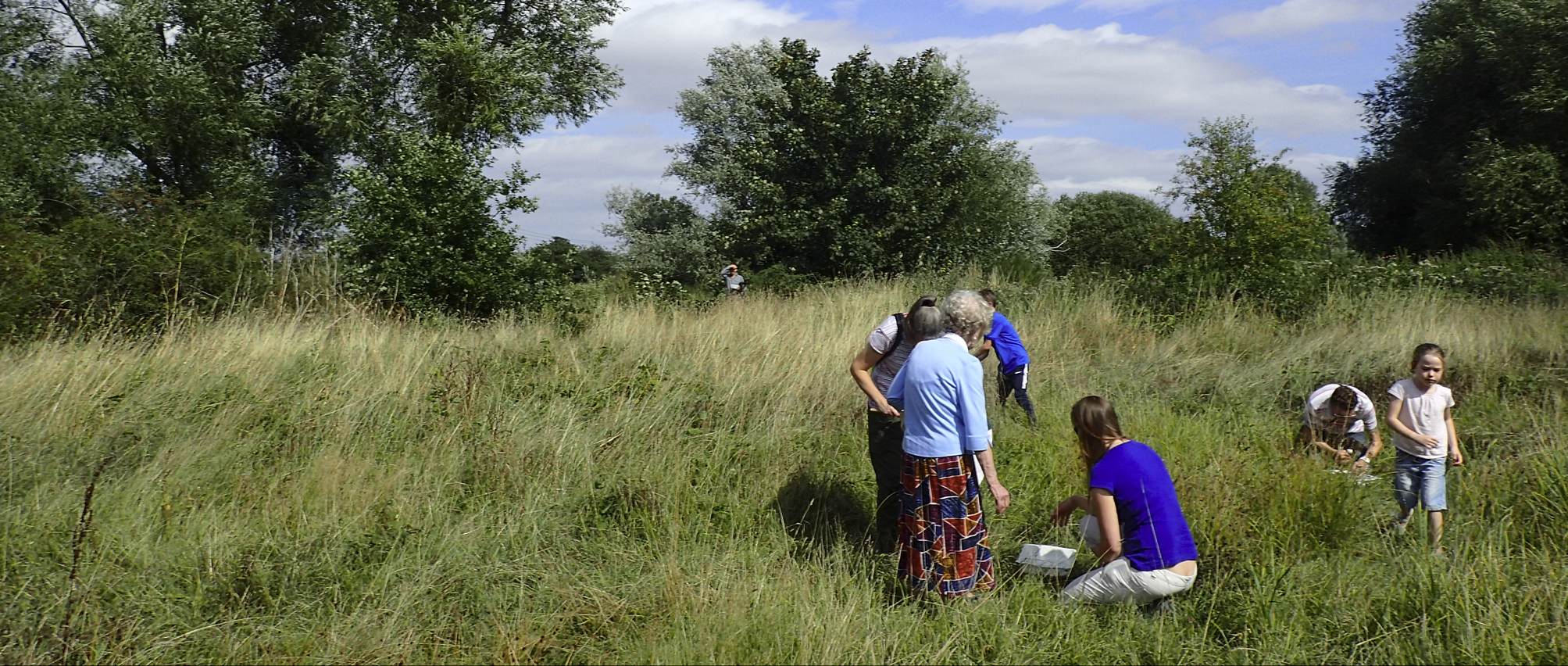RECENT ARTICLES
- CEBRA: An optimised and standardised sampling protocol for BioBlitz
- Stop it people, the plural of anecdote IS data!
- That's no pollinator, that's a flower visitor
- Add a scale to your macro photos
- What to photograph when counting the wild
- Imagine counting the wild on EVERY street in a city!
- My wild counting workflow
- A butterfly flew through
- Why iNaturalist observations without photos can be research grade
- Why you shouldn’t use a spreadsheet for data entry
- All articles ...
CEBRA: An optimised and standardised sampling protocol for BioBlitz
CEBRA is a protocol to add consistency to data collection at BioBlitz events so that they can be used for ecological monitoring.
written Jul 21, 2023 • by Jagoba Malumbres-Olarte • Category: Wild Counting

The need for “better” data
It is increasingly clear that scientific communication should focus not only on education, but also on the interaction and dialogue between the scientific community and general public. Only then will we create more trust and interest in environmental research. Many activities and events aim to achieve this exchange of communication and, among them, one has been standing out in recent years: BioBlitz(es).
A BioBlitz is a citizen science event or initiative that brings together experts, families and schoolchildren to carry out the biological inventory of an urban area or nature reserve in a short period of time. Bio means “life” and blitz means “to do something quickly and intensively”. So a bioblitz is a concerted effort to discover and record as many living things as possible within a set location over a limited time period (usually 24 to 36 hours). The first bioblitz was organized in Washington in 1996 and since then, every year, hundreds of bioblitzes are celebrated around the world. Since their beginnings, bioblitzes have tended to have two main objectives: a scientific one – to register all the species that live within a designated area – and an educational one – to raise awareness about the importance of biodiversity and conservation.
Bioblitzes have the potential to be excellent tools for collecting biological data to evaluate and monitor biodiversity. In fact, in recent years samples and data collected in bioblitz from various parts of the world have contributed to important findings in the fields of ecology and evolutionary biology – from measures of the richness of aquatic species with DNA techniques (Laforest et al., 2013), through the discovery of herpetofauna ‘hotspots’ (Graham et al., 2010), to the detection of invasive species (Cohen et al., 2011). In our view, however, the use of bioblitz is usually limited by three shortcomings: 1) the lack of comparability of samples from different bioblitzes due to variability in the sampling effort (number of participants, sampling time, etc.); 2) the scarcity of quantitative data (abundance of individuals of each species); and 3) the shortage of information on the efficiency of the sampling (the percentage of recorded species from the total present). These three shortcomings of bioblitzes reduce the value of the generated data or hinder their analyses thereby discouraging many scientists to contribute to the collection and identification of the samples. And that is where the CEBRA sampling protocols can help us.
What is CEBRA?
CEBRA sampling protocols (Citizen-led Educational Biodiversity Rapid Assessment) are protocols designed to be used in citizen science activities like bioblitzes and aim at increasing the quality of the data collected in such events. By doing so, CEBRA protocols aim to improve the capacity of bioblitzes to evaluate and to compare biodiversity in different locations and to monitor their changes over time. Inspired by the COBRA protocols (Cardoso 2009, Cardoso et al. 2009, Malumbres-Olarte et al. 2017), the CEBRA protocols are also based on comparable sample units that require the same amount of effort, are taxon specific and can be designed for a particular habitat. Hence, the CEBRA protocols are standardised (applicable to multiple locations) and optimised (collecting as many species as possible given a specific amount of effort).

A tool for monitoring biodiversity
In this time of loss and degeneration of biodiversity, it is necessary to measure, monitor and predict changes in the environment. CEBRA protocols can help to detect these changes and thus to understand the consequences of human activities and climate change on biodiversity. This information may be the basis for making decisions in conservation programs, such as how to set the size of parks and natural areas, which activities should be allowed and how long the measures should last. The CEBRA protocols are meant to be easy to use and apply by non-experts as it is intended to be a tool for **all stakeholders** (organisers, funding organisations, landowners, participants) of citizen science events.

The CEBRA project
Since 2016 the CEBRA project has been collecting/generating data to design CEBRA protocols that are applicable in as many locations as possible. The more data we have, the more optimised (efficient) and standardised the resulting protocols will be. Although the design of the protocol is in principle applicable to any taxon and method, we are currently developing CEBRA protocols for arthropods. Arthropods are one of the most diverse groups and, therefore, it is with them that the sampling efficiency (the “optimisation”) is more necessary. Multiple researchers and institutions are involved in the CEBRA project: Jagoba Malumbres-Olarte (ecologist from the Univ. of the Azores, and coordinator of the project), Sara Goodacre and Sarah Pierce (Univ. Nottingham), Matt Postles (Bristol Natural History Consortium), Berta Caballero (Museum of Natural Sciences of Barcelona, MNSB), Tim Sexton (The Wildlife Trust), Sophia Ratcliffe (National Biodiversity Network) and the Barcelona Zoo Trust, among others. Our project is gradually expanding the network of institutions and nature reserves that collect and share samples and data following specific and simple guidelines and, design the CEBRA protocols.

How to apply CEBRA
Applying a CEBRA protocol is very simple and does not require difficult modifications of the common bioblitz sampling approaches. Organisers must only ensure that the collected samples fulfil two requirements: they must be kept separate and be as comparable to each other as possible (must require the same effort). The comparability of samples is ensured by assigning them the same number of collectors, sampling method and time, habitat and target taxa. For instance, a sample of a bioblitz event organised in a paddock may consist of all the spiders collected in the target area during the same length of time and by the same number of participants.
Ultimately, the bioblitz organisers must decide which features the samples should have but, based on our experience, we recommend that each sample:
- is collected by 2-3 collectors (usually families of adults and children);
- lasts for 10 minutes
- contains same taxa as the rest (all arthropods, only spiders, etc.)
- is collected by using one sampling method (for instance, vegetation beating and sweeping, and pitfall traps, among others) (Coddington et al., 1996, Sunderland et al., 1995, Townes H, 1972, Uetz and Unzicker, 1976)
By doing so, each sample will be comparable to samples collected by other participants, who will be grouped, guided, overseen and timed by the organisers of the bioblitz. In addition, organisers may account for the small differences in the number of collectors of each sample by recording basic sampling data, including the number of adult and children collectors (see data form in a separate file). Although this approach is in principle applicable to most taxa, habitat and sampling methods, it is particularly useful when recording or collecting megadiverse organisms such as invertebrates.
Although it is up to the participating institutions how to manage and where to store the collected samples, Jagoba Malumbres-Olarte is currently supporting and coordinating their processing (including the indentification of the specimens) and management. Bioblitz organisers can also decide whether they want to manage the data generated from their samples themselves or provide them to the relevant Local Environmental Records Centre or the National Biodiversity Network (UK), following the standardised formats. At the moment, J. Malumbres-Olarte is, in collaboration with participating institutions, ensuring that the different aspects of the CEBRA project (including the application of the sampling design/ guidelines and the funding) develop appropriately, so any inquiries should be directed to him ([email protected]).
What do CEBRA protocols provide?
The use of CEBRA will enrich civic-scientific activities because: 1) It will be the first easy-to-apply sampling protocol specifically designed for citizens, standardised and optimised; 2) it will increase the efficiency of the sampling and the quality (quantitativeness, comparability) of the data generated in citizen science activities; 3) by increasing comparability of data from different locations and different years from the same locations, CEBRA will turn citizen science events into tools for monitoring biodiversity and not only for measuring it; and 4) will attract more scientists and experts to participate in the events.
Although the contribution of CEBRA is largely scientific, it will also be socially beneficial because non-scientists applying CEBRA protocols in bioblitzes will have the opportunity to learn why standardised and optimised sampling is so important in scientific research and how comparable samples/ data are collected for the study of biodiversity. In other words, CEBRA will contribute to the scientific literacy of citizens while increasing their sense of contribution to science and conservation. By strengthening the scientific component of bioblitz events, these protocols may also increase the engagement and the scientific experience of participants, which may lead to greater engagement in biodiversity-related activities and connection with conservation areas, and to the feeling that they contribute to conservation management, education and scientific knowledge (Ellis and Waterton 2004, Leong and Kyle 2014, Laut et al. 2015). An unexpected outcome of CEBRA has been the transformation of the sampling event into a game caused by the game pressure exerted by the sampling time limit. As a result, collaboration between collector team members and the competition between teams increase, making the event even more enjoyable.
References
Cardoso, P. (2009). Biodiversity and Conservation, 18, 3949–3962.
Cardoso, P., Crespo, L. C., Carvalho, R., Rufino, A. C., & Henriques, S. S. (2009). Diversity, 1, 36–51.
Coddington, J. A., Young, L. H., & Coyle, F. A. (1996). Journal of Arachnology, 24, 111–128.
Cohen C, McCann L, Davis T, Shaw L, Ruiz (2011) G, Aquatic Invasions, vol. 6, issue 3 pp. 263-271.
Graham S, Steen D, Nelson K, Durso A, Maerz J, (2010) Southeastern Naturalist, vol. 9, issue 1 pp. 19-34.
Laforest B, Winegardner A, Zaheer O, Jeffery N, Boyle E, Adamowicz S (2013). BMC ecology, vol. 13 p. 13.
Malumbres-Olarte, J., Scharff, N., Pape, T. Coddington, J.A., Cardoso, P. 2017. Ecology and Evolution 7(2): 494–506.
Roger, E. & Klistorner, S., 2016., Journal of Science Communication 15(03), A06.
Sunderland, K.D., De Snoo, G.R., Dinter, A., Hance, T., Helenius, J., Jepson, P., Kromp, B., Lys, J.A., Samu, F., Sotherton, N.W., Toft, S., Ulber, B., 1995.., in: Toft, I.S., Riedel, W. (Eds.), Aarhus University Press, Aarhus, pp. 133–162.
Uetz, G.W., Unzicker, J.D., 1976 Journal of Arachnology 3, 101–111. Townes H (1972) Entomological News 83:239–247
